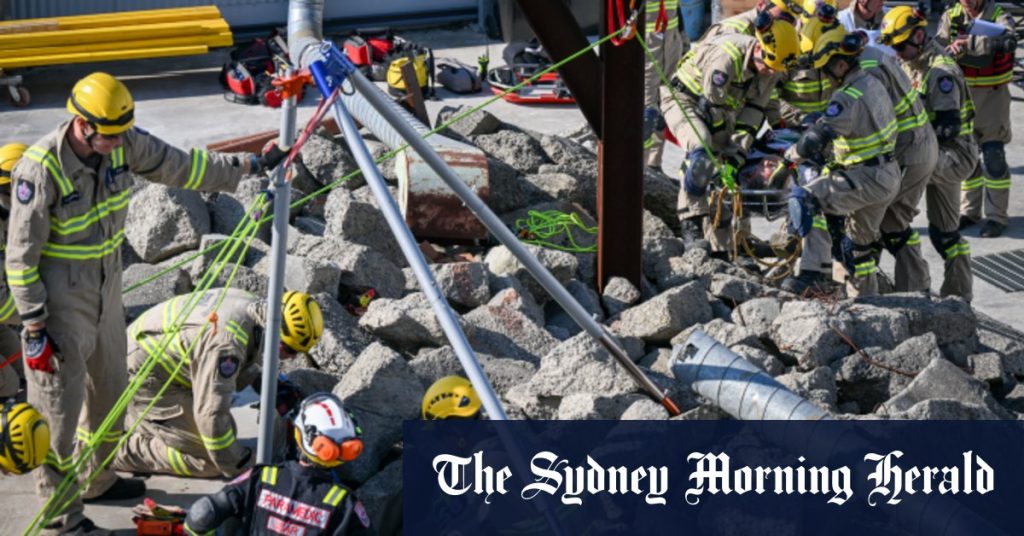A counter-terrorism drill held in Melbourne tested the coordination between emergency agencies in the event of a major terrorist attack. The fictional scenario involved a residential building collapsing following an explosion caused by a terrorist cell manufacturing improvised explosive devices. First responders like Fire Rescue Victoria commander Arran Dixon attended to the scene, providing aid to injured individuals trapped in the rubble. The drill, the largest of its kind in Victoria, aimed to simulate a real-life scenario as accurately as possible, including media involvement and nosey onlookers trying to access the crime scene.
The two-day exercise involved 200 participants from various departments, including media liaison officers conducting mock press conferences with officers playing the role of reporters. Observers from other agencies in New Zealand, Queensland, and New South Wales were also present to assess the response tactics. Inside the control room, Victoria Police and fire rescue teams closely monitored maps and CCTV footage of the incident site, responding to developments such as a terrorist group claiming responsibility for the blast online. Specialized units from Victoria Police, including the arson and explosive squad and the bomb response unit, were deployed to investigate the potential terrorist link.
The drill highlighted the importance of multi-agency training for first responders, emphasizing the need for quick and efficient coordination in high-stress environments. Victoria Police’s counter-terrorism assistant commissioner Mick Hermans stressed the significance of practicing in a realistic setting, where minutes can make a difference in the outcome of a crisis. The exercise, named Exercise Restormel, also identified areas for improvement, such as enhancing psychological support for first responders, and coordinating professional development across agencies within a high-tempo operating environment.
Recent terror-related incidents in New South Wales and Western Australia, involving a radicalized 16-year-old boy shot dead by police in Perth, and the arrest of underage boys in Sydney on terrorism charges, have renewed attention on Australia’s counter-terrorism efforts. The Melbourne drill, nine months in the making, aimed to provide a comprehensive assessment of emergency response capabilities in the face of a terrorist threat. By simulating a complex multi-agency deployment, the exercise tested the ability of Fire Rescue Victoria, Ambulance Victoria, and Victoria Police to work collaboratively in high-risk environments, ensuring they are prepared to tackle real-life scenarios effectively.
Reflecting real-world challenges, the exercise involved scenarios such as managing injured civilian casualties, tracking down suspected terrorists, and coordinating rescue operations in a collapsed building. The participants, including firefighters, police officers, and ambulance staff, underwent rigorous training to simulate the intensity and complexity of a terrorist attack response. With national discussions and assessments conducted as part of Exercise Restormel, the exercise provided a valuable opportunity for agencies to refine their strategies and enhance their capabilities in handling future security threats effectively.


